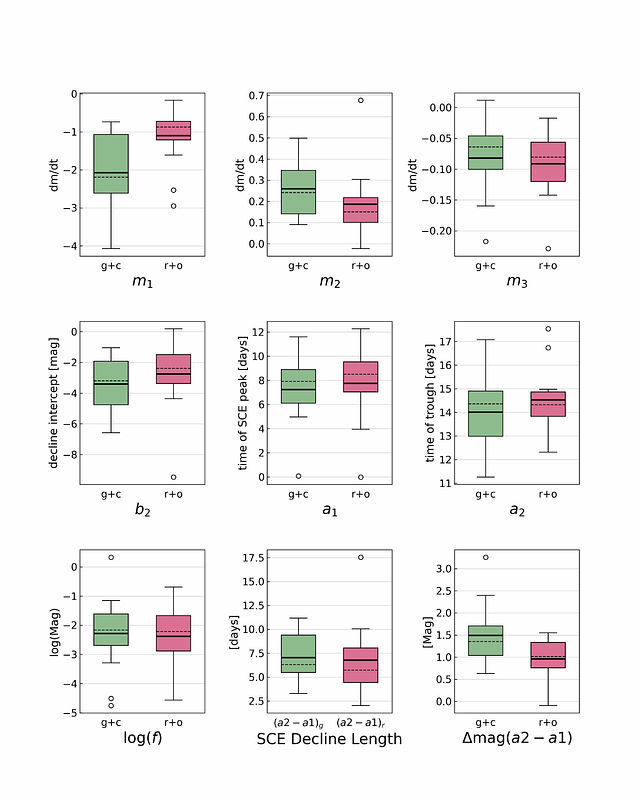Peaky Finders: Characterizing Double-Peaked Type IIb Supernovae in Large-Scale Live-Stream Photometric Surveys

Peaky Finders: Characterizing Double-Peaked Type IIb Supernovae in Large-Scale Live-Stream Photometric Surveys
Adrian Crawford, Tyler A. Pritchard, Maryam Modjaz, Craig Pellegrino, Sahana Kumar, Raphael Baer-Way
AbstractWe present the first photometric population study of double-peaked Type IIb supernovae (SNe IIb). SNe IIb are produced from the core-collapse of massive stars whose outermost Hydrogen layer has been partially stripped prior to explosion. These double-peaked light curves, consisting of a shock-cooling emission peak (SCE) followed by the main nickel-powered peak, contain more crucial information about the progenitor system than the typical single-peaked light curves. We compiled and analyzed a sample of 14 spectroscopically confirmed SNe IIb -- including previously unpublished and re-classified -- with publicly available photometric observations, discovered between 2018--2022, from the ZTF and ATLAS surveys. We developed and fit a piecewise linear model, referred to as the ``lightning bolt model,'' to describe the early-time behavior of these objects to measure population statistics. Notably, we find the SCE peak lasts, on average, fewer than five days above half-maximum light with a mean rise time of $2.07\pm1.0$ and $1.1\pm0.8$ mags/day in the g- and r-band respectively. These SCE rise rates are over 10x faster than -- and last only a third the duration of -- the rise to the nickel-powered peak. These rise times are comparable to those of fast blue optical transient (FBOT) events and we discuss the implications in the text. Finally, we present a proof-of-concept alert filter, using the ANTARES broker, to demonstrate how to translate these population statistics into simple and effective filters to find potential double-peaked SNe IIb in large-scale survey alert streams, like the imminent Vera C. Rubin Observatory Legacy Survey of Space and Time (Rubin LSST).